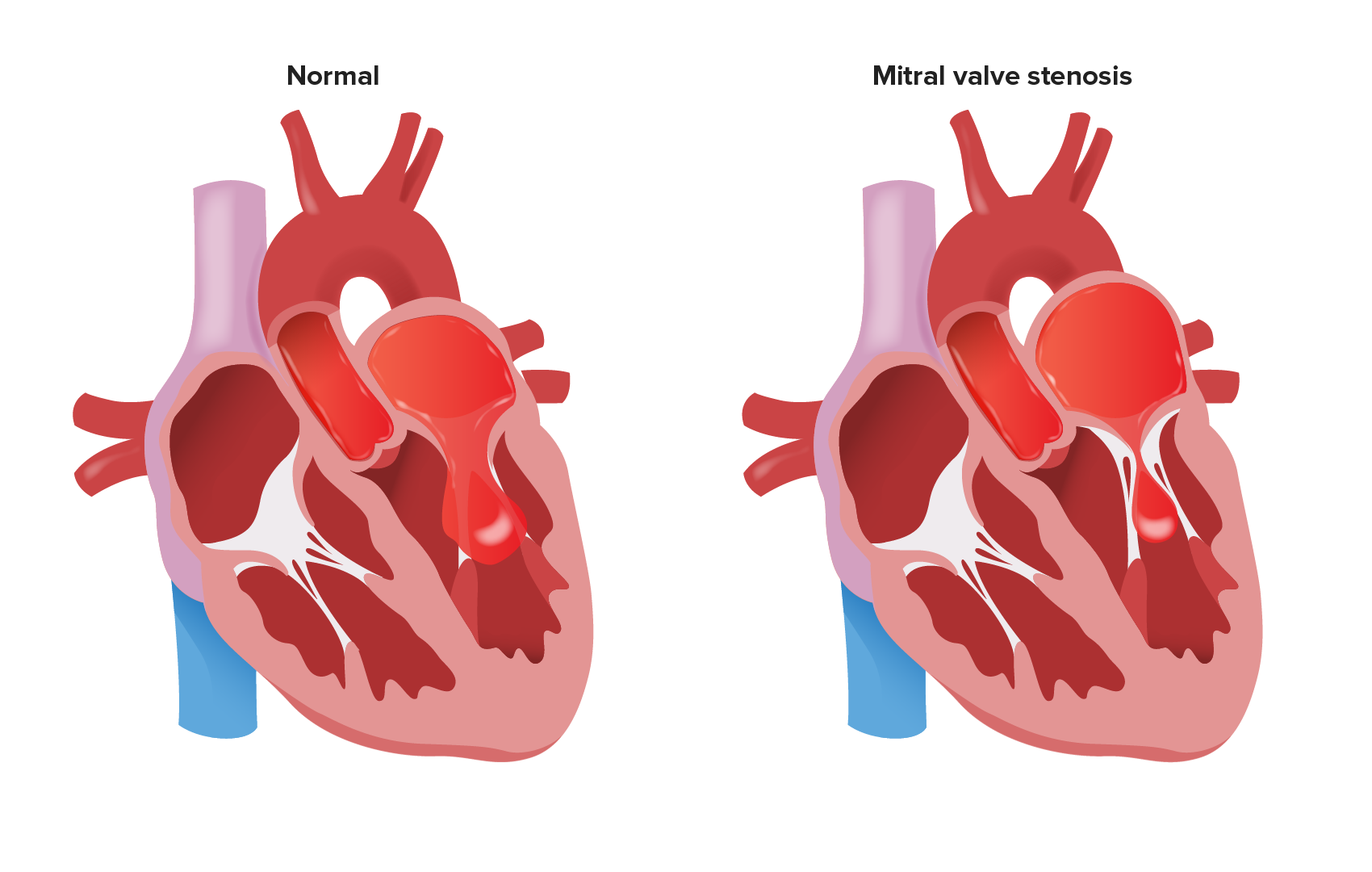Playlist
Show Playlist
Hide Playlist
Mitral Stenosis: Pathogenesis
-
Slides ValvularHeart DiseaseMitralStenosis CardiovascularPathology.pdf
-
Download Lecture Overview
00:00 Mitral stenosis, you are having an issue in which the orifice between the mitral valve or between the left atrium and the left ventricle has become narrowed. Major cause. Rheumatic heart disease yet once again, so let us just collectively think about this one more time. If it is the patient, a child perhaps with pharyngitis and wasn't properly treated for the streptococcal infection, two to four weeks later ended up developing issues within the heart and you would call that rheumatic disease, but one thing that I want to get away from so that you understand the big picture of rheumatic heart disease is that only the endocardium that will be affected by rheumatic heart disease. The operative word here is heart. Granted, if you are talking about damage to the valves, then what part of the heart are you in? Meaning to say in terms of positioning, you are in the endocardium so therefore the endocarditis would then give rise to the valvular heart problems, wouldn't it? In rheumatic heart disease. But then could you have issues with the myocardium, myocarditis? Of course, you could. But that wouldn't lead into valvular heart disease, but there will be myocarditits, still part of the heart and then please do not forget, you can have rheumatic heart disease in which you could have pericarditis. 01:20 So these are things that when we talk about rheumatic fever as a whole and you are thinking about rheumatic heart disease as being a component of what is known as your major Jones criteria. 01:31 You remember that? One of them is pancarditis. What we're dealing with specific and what we have been dealing with here? Specifically, it has been the endocarditis component of rheumatic heart disease. Is that clear? I hope so. 01:46 Now, with endocarditits, taking place due to rheumatic heart disease early on the damage is taking place, the valves, what is the topic here? Stenosis, not early on. Early on it would be what kind of issues, please? Regurgitation. What side of the heart are you paying attention to? Left side. What are they? Aortic and maybe the mitral regurg issues. Our topic here stenosis and I have mentioned this a few times, let us do it once more. When you have repair process taking place due to damage, which is occuring here due to rheumatic heart disease, then the repair process will result in later on chronically as mitral stenosis. "So Dr. Raj, you tell me the rheumatic disease that there could potentially be four different valvular heart diseases?" That is exactly what I am telling you. Two of those will be early with regurgitation. Two of those will be later on, chronically with stenosis. Right now we are dealing with mitral stenosis. Let us continue. Now, the pathophys as the valve area gets smaller, orifice, where is that going to be more work? Left atrium. As it increases the pressure and such in the left atrium, then please understand how would you measure this clinically? PWCP. Pulmonary Wedge Capillary Pressure. And there would a Swan-Ganz catheter in which once it get wedged in your pulmonary blood vessels, you are going to be measuring the pressure where? Downstream and so, therefore, can you expect your left atrial pressure to be increased? My goodness. Isn't that the main feature of mitral stenosis? The pulmonary blood vessels would be affected and early on you will have pulmonary edema. 03:44 That is not a good thing.
About the Lecture
The lecture Mitral Stenosis: Pathogenesis by Carlo Raj, MD is from the course Valvular Heart Disease: Basic Principles with Carlo Raj.
Included Quiz Questions
Which of the following is the most common cause of mitral stenosis?
- Rheumatic heart disease
- Dystrophic calcification
- Bicuspid valve
- Congenital mitral stenosis
- Intravenous drug use
Which of the following statements is TRUE regarding mitral stenosis?
- There is increased pressure in the pulmonary veins.
- There is reduced pressure in the pulmonary veins.
- There is reduced pressure in the left atrium.
- There is atrophy of the left atrium.
- There may be compression of the right recurrent laryngeal nerve.
Customer reviews
5,0 of 5 stars
| 5 Stars |
|
5 |
| 4 Stars |
|
0 |
| 3 Stars |
|
0 |
| 2 Stars |
|
0 |
| 1 Star |
|
0 |




